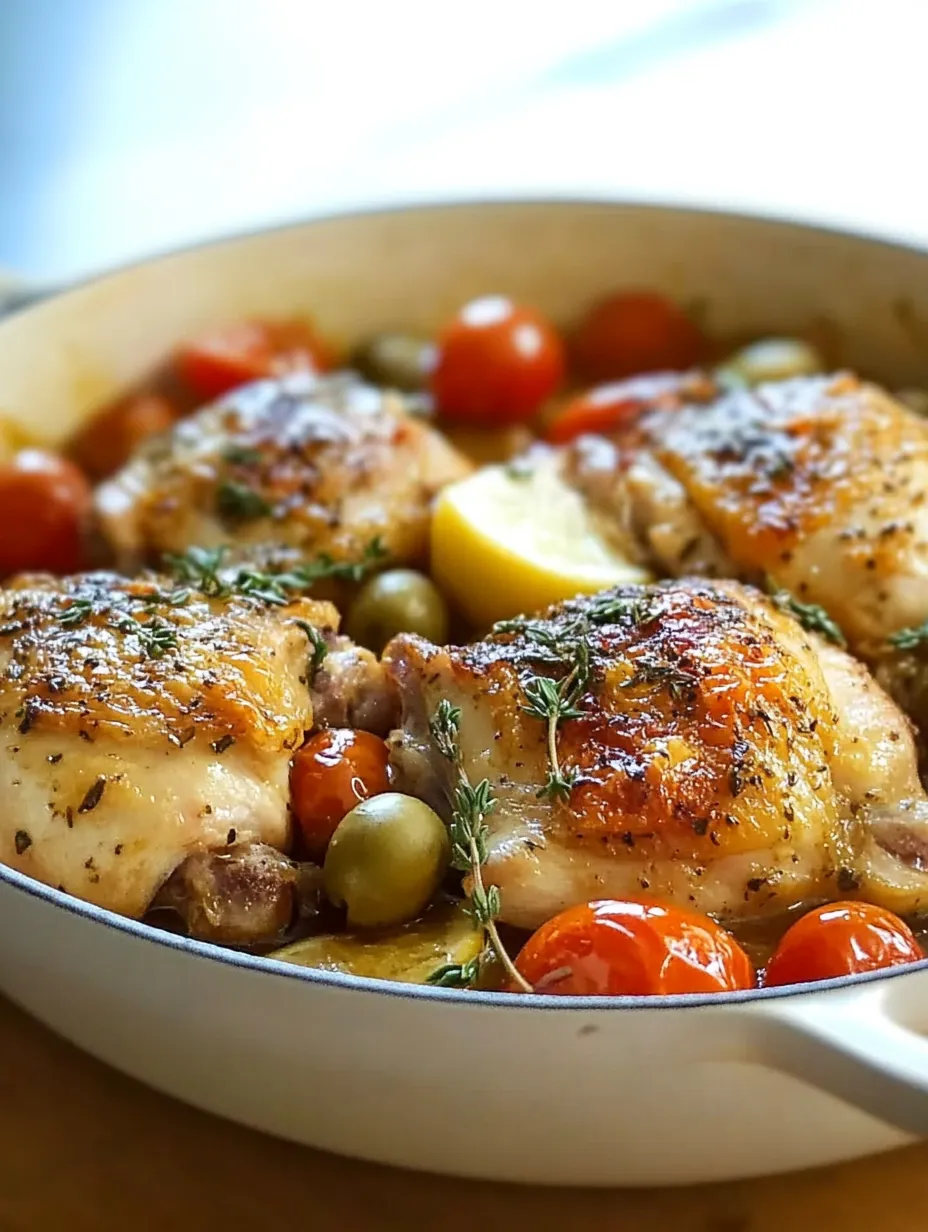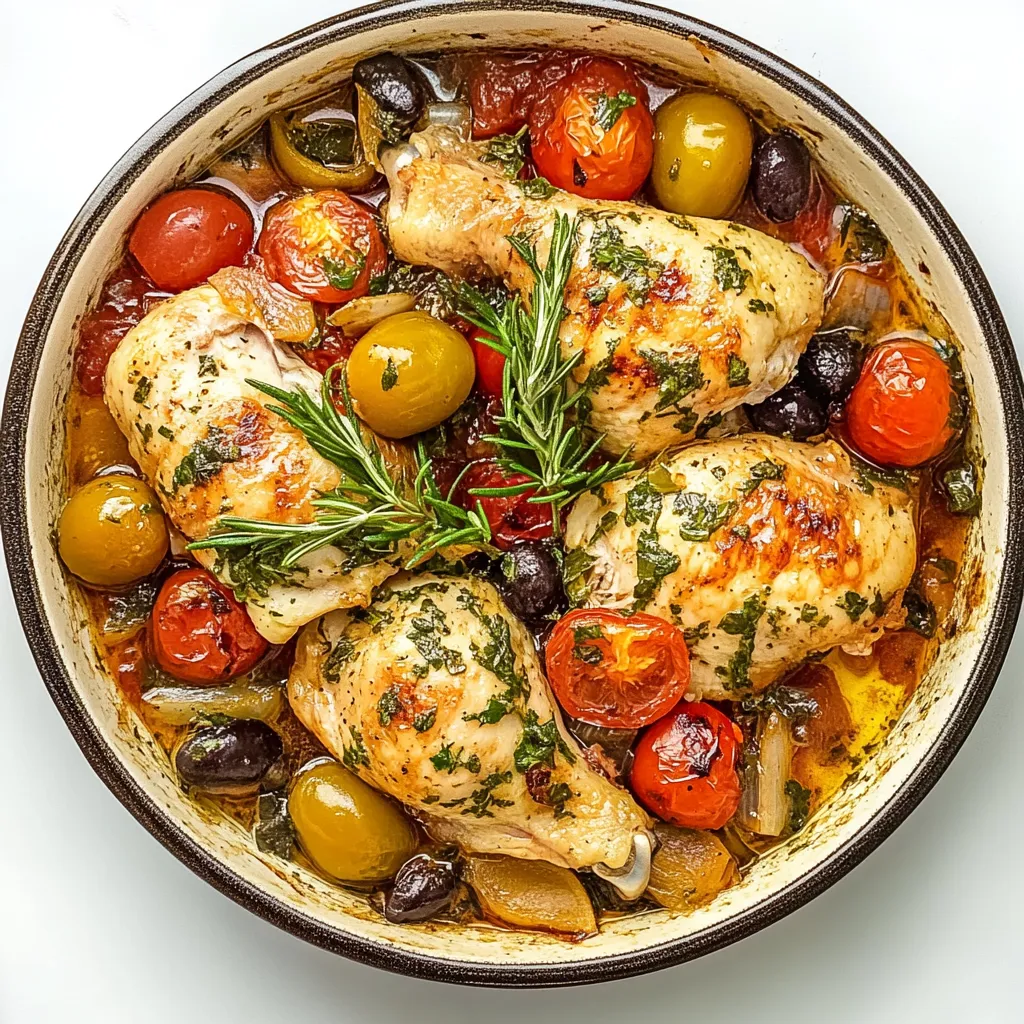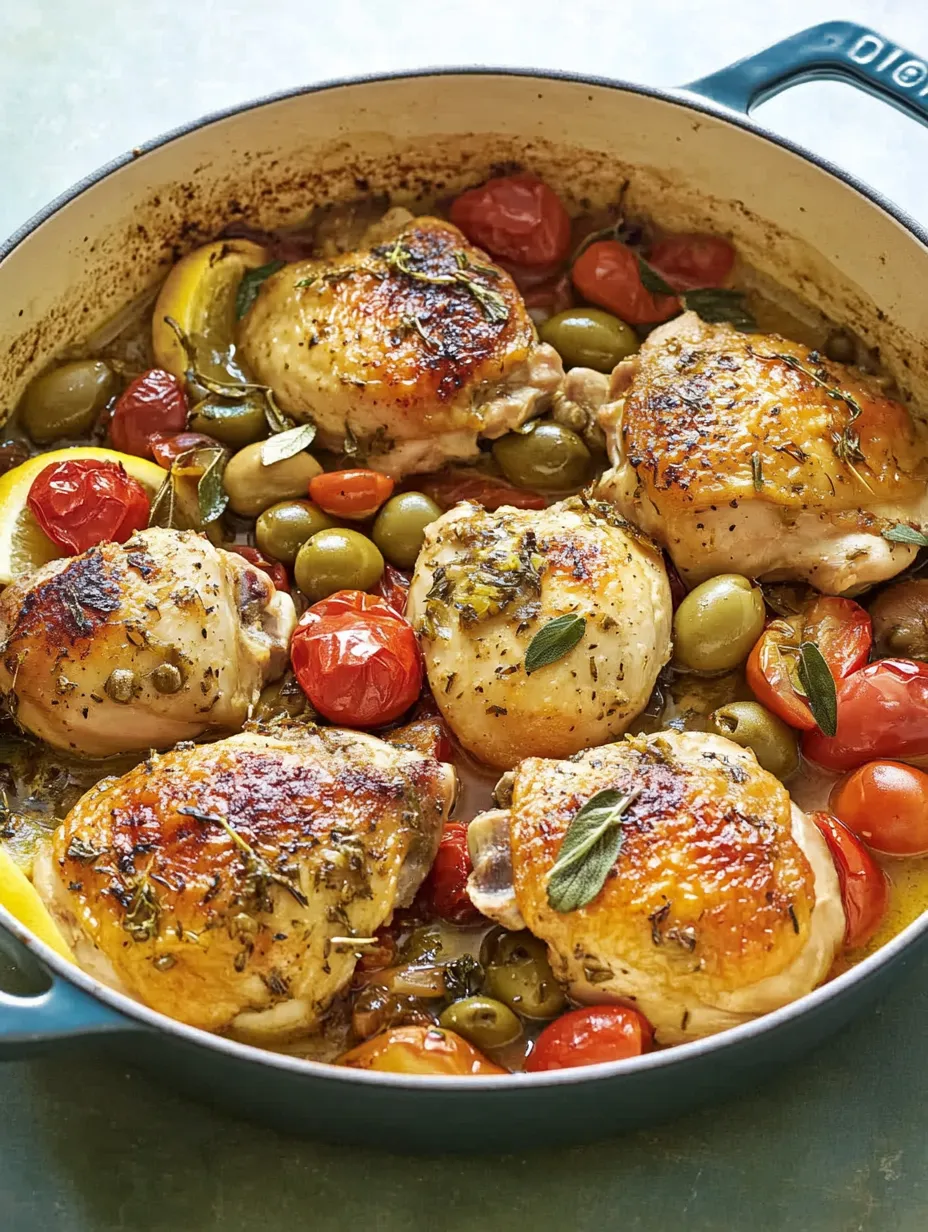 Pin it
Pin it
When Chicken Provençal simmers away in your kitchen, you'll feel like you've been whisked off to sunny southern France. I've spent years tweaking this dish and found that its real beauty isn't just what goes in it, but how each ingredient plays its part in the perfect Provençal mix. Plain chicken thighs turn into something amazing with proper browning and slow braising.
I made this for friends last weekend and they went quiet when they tried their first bite, then immediately wanted to know how to make it. What's my trick? Taking my time with each part, mainly when first browning the chicken.
Key Ingredients and Shopping Advice
- Chicken Thighs: Go for ones with skin still on and similar sizes - they need to be juicy and fresh-looking
- Herb Selection: Dried Herbes de Provence work in a pinch, but nothing beats the pop of fresh thyme
- Olives: Try the bright green Castelvetrano type for their perfect mix of salty and buttery taste
 Pin it
Pin it
Starting Off Right
First thing's first - get those chicken thighs completely dry, as this step can't be skipped if you want that gorgeous golden skin. Don't be shy with salt and pepper since this first seasoning sets up your whole dish's flavor. Let them sit out for 15-20 minutes while you get everything else ready.
 Pin it
Pin it
Perfect Searing Technique
Warm your pan slowly over medium-low heat so it gets hot all over without any spots that are too hot. Add olive oil and wait until it just starts to shimmer. Put your chicken in skin-down and listen for that soft sizzle that means you'll get crispy goodness. Don't touch or move them for at least 8-10 minutes. Your patience here pays off with amazing flavor and texture.
Prepping Your Flavor Boosters
While your chicken gets nice and brown, sort out your flavor makers. Cut shallots in quarters but keep the root bit so they stay together during cooking. Keep garlic cloves whole - they'll turn soft and sweet as they cook. Pick tomatoes that are ripe but still firm; they'll slowly melt down and make your sauce richer.
Braising Like a Pro
After your chicken's well-browned, flip each piece carefully - if they're sticking, they aren't ready to turn yet. Toss your shallots, garlic, and tomatoes around the chicken, not covering it. Spread your olives and capers evenly throughout the pan. Drop in lemon wedges last to give little bursts of brightness all through your dish.
Picking and Adding Wine
Go for a dry white wine you'd happily drink - I usually grab a crisp French white like Chablis or Sancerre. Pour it around the sides of the chicken, not directly on top, so the skin stays crispy. You want the wine to come up about halfway on the chicken pieces, making just the right braising environment.
Beautiful Presentation
Bring your whole pan straight to the table - it looks rustic and charming that way. The colors tell their own story: golden chicken, bright tomatoes, purplish shallots, and green herbs make it look as good as it tastes. Lay some crusty bread slices around the edge of the pan so people can soak up all that amazing sauce.
French Roots and Background
Chicken Provençal captures everything great about cooking from southern France. It was born in Provence, showing off the region's olive trees, herb-covered hills, and Mediterranean style. Every family in every little town has their own version, each with special touches while keeping true to what makes the dish so special.
Drink Pairings and Serving
We cook with white wine, but you've got options when serving. A good rosé from Provence works beautifully, or try a light red like Côtes du Rhône. Pick something that works with the herby notes without taking over the more delicate flavors.
Changing With The Seasons
- Summer: Grab fresh local tomatoes and just-picked herbs
- Fall: Throw in some mushrooms for deeper flavor
- Winter: Up the garlic and herbs for extra warmth
- Spring: Serve with small new potatoes on the side
Cookware That Makes a Difference
It all starts with the right pan. You need something heavy-bottomed that can go in the oven - it'll help spread heat evenly for that perfect sear. Cast iron pans work great and get better each time you use them, while enameled Dutch ovens hold heat wonderfully and clean up easy. Make sure your pan's big enough for all ingredients without crowding them in, or you'll end up steaming instead of braising.
Smart Leftover Ideas
 Pin it
Pin it
Lucky enough to have some left? It often tastes even better the next day. Keep the chicken and sauce apart from any sides you served. When you want to warm it up, put the chicken skin-side up in a covered dish with a splash of white wine or chicken broth. Heat it slowly in a 325°F oven just until it's warm - about 15-20 minutes should do it.
Fitting Into Your Week
This dish works great for weekly meal plans. Get everything ready the day before and store items separately. Most of the cooking time doesn't need you watching over it, so you can handle side dishes or other tasks while your oven does the work. When you can, make a double batch - the leftovers make awesome sandwiches or salad toppings.
More Ways To Serve It
- Smooth Polenta: Great for soaking up every bit of sauce
- Oven-Roasted Fingerlings: With matching herbs
- Butter Lettuce Salad: Dressed with light vinaigrette
- Green Beans: Quick-cooked with garlic and slivered almonds
Closing Thoughts and Reflections
What makes Chicken Provençal so special is how straightforward it is while honoring good ingredients. After making this countless times, I've found that success comes from knowing how each part builds flavor. Watching basic ingredients slowly transform into something fragrant and cohesive really shows what French countryside cooking is all about.
Frequently Asked Questions
- → Can chicken breasts work for this?
- Thighs stay moist during slow cooking, but breasts are okay if you lessen the cooking time.
- → What’s a white wine replacement?
- Mix chicken broth with a bit of white wine vinegar for a similar taste.
- → What’s in Herbes de Provence?
- This mix often includes thyme, rosemary, oregano, sage, savory, marjoram, basil, and lavender.
- → Can I prepare it a day before?
- Yes, it tastes even better after resting. Reheat on low heat, either on the stove or in the oven.
- → What cookware should I use?
- A big oven-safe pan or Dutch oven that's at least 12 inches wide is ideal.
